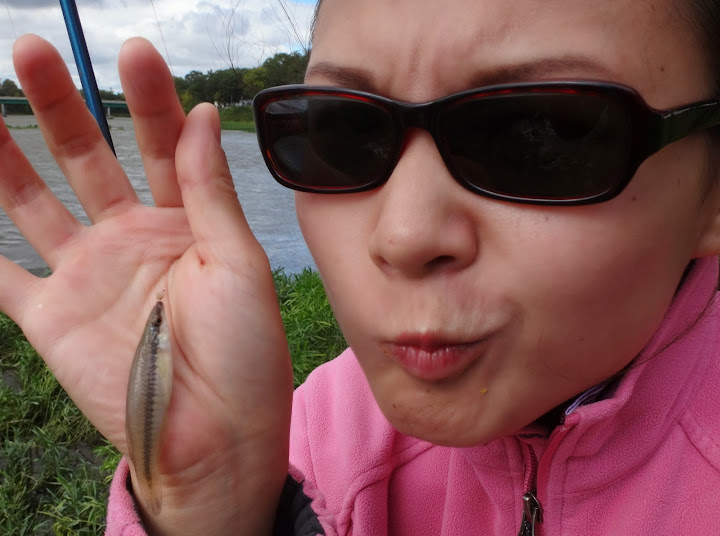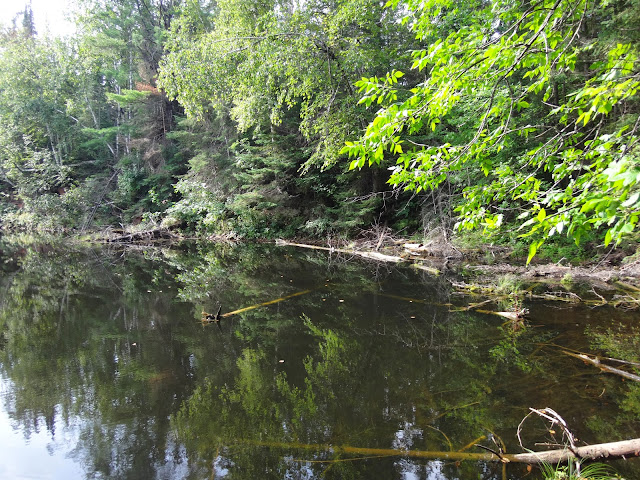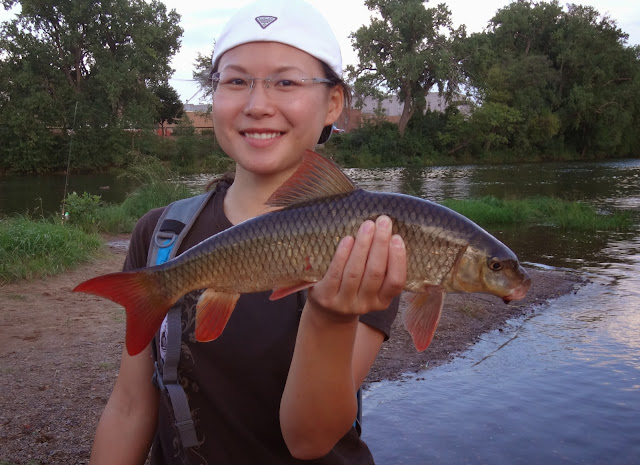Tapole Madtom (Noturus gyrinus)

After Crane Creek I picked up my older brother in Springfield, and we went kayaking at Lake Sangchris. I had read reports of striped bass and gizzard shad being caught there, so that's what I was hoping for. More importantly though, I was just happy to be out with my brother. We paddled around throwing swimbaits that looked like shad. We tried the deep part of the lake and a few of the shallow bays, but we didn't get any bites. We switched to small hooks and nightcrawlers and caught a few bluebill and a small largemouth bass, so we didn't go home skunked.
The next morning I hit the road again to meet up with Lance Merry, another Illinois fish enthusiast. Lance was interested in seeing mountain madtoms from the Embarras River in Coles County, and I had quite a few targets there as well - eastern sand darter, dusky darter, slenderhead darter, bullhead minnow, and brindled madtom. We weren't able to find any mountain madtoms, but the brindled madtoms were plentiful and happy to eat a small piece of nightcrawler. Finally, a new lifer!
Brindled Madtom (Noturus miurus) - new hook & line species #242

The brindled madtoms had a lot of variation in terms of color and patterning. Some were dark, some were pale, and others were yellow. They were fun to catch.



With the net we caught the other fish I was hoping to see, as well as a freckled madtom, a species I hadn't seen before. I was particularly happy to see eastern sand darters up close.
Eastern Sand Darter (Ammocrypta pellucida)

Our final stop was the Salt Fork Creek in Champaign County. The Salt Fork and its tributary, the Saline Branch, have been improving over the years and have quite a long list of fish species established in them. We caught some neat fish - rainbow darters, greenside darters, and stonecats, but the species we were really excited to see were bluebreast darters, which were sampled in Champaign County for the first time a year or two ago. We took a few photos and then released them back into the riffle where we found them.
Bluebreast Darter (Etheostoma camurum)


Hopefully I'll have one or two more posts before it gets cold. Stay tuned!











































